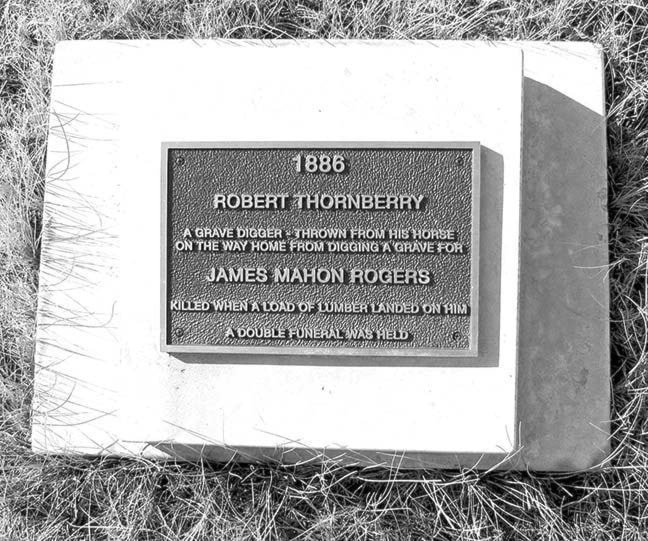Jim Cameron
Death is inevitable, it would seem. The Grim Reaper takes many forms upon this mortal coil: war, disease, famine, water, fire and, in the case of local fatal misadventures, ceramics, Christmas trees, elephants and sleeping. There's just no telling how it will end.
The first murder in Cranbrook, in which Edward Ryan was shot to death near the CPR freight shed on the night of March 27, 1899, was a case of mistaken identity. He was just in the wrong place at the wrong time.
So was William Reid, a CPR conductor who was killed instantly the same year when a tree fell on him, roots and all, while he was walking along the railway tracks near town on his way to catch a train to Winnipeg to spend Christmas with his wife and son.
CPR fireman James Power met his maker in 1901, when, for no known reason, he plunged from a locomotive while crossing a bridge near Sirdar and, rather ironically for a fireman, drowned in the waters below.
Death seems never more tragic than when it takes the young, as in the 1904 case of the Coulter family of Nelson. Mr. and Mrs. Coulter were attending the funeral of their three-year-old son who died from exhaustion while lost on a mountainside, when another young son, apparently unattended at home, drank from a bottle of disinfectant left by the undertaker and was found dead upon the parents return.
So, too, are the deaths of young ladies particularly tragic. In 1909, Salvation Army worker Miss Lucy Horwood, age 24, met her demise when she was struck on the head by the handle of a CPR handcar upon which she was riding.
In 1912, Cranbrook nurse-in-training Eva Maria Wagstaffe went to local dentist Dr. Hill to have a tooth extracted. She requested an anesthetic which was duly administered by Dr. McBurney of the St. Eugene Hospital. The tooth was successfully extracted but Miss Wagstaffe was not, dying of acute cardiac failure.
Perhaps one of the most tragic deaths is that of Agnes Pearle Parker, age 19, a bright and lively young nurse at St. Eugene Hospital who spent the week before Christmas of 1916 excitedly planning her part in the annual Christmas party put on by the nurses for the patients. She was happily engrossed in her Christmas Day role as Santa Claus when her outfit brushed against a candle on the Christmas tree. She ran screaming down the corridor, engulfed in a sheet of flames until she finally collapsed. Friends rushed to extinguish the blaze but it was too late. She died the following day.
The most insignificant of occurrences can lead to death. Joseph Walsh, long-time Fort Steele resident and provincial police constable died in 1922 from a small sliver of dish enamel that embedded in his flesh and led to blood poisoning. Miss Albina Haddad, age 18, died in 1930 from the same cause following the scratching of a face pimple. Two-year-old Colin Sinclair, of Tobacco Plains, met his demise in 1904 from the effects of a wood tick burrowing so far into his neck that it penetrated his spinal cord, causing death from paralysis, one of the few, if not the only, recorded deaths from a wood tick in the East Kootenays.
Damon Foster was killed in 1925 during a baseball practice when he was struck in the head by a flying bat that slipped out of a teammate's hand, one of the rare deaths during a sporting event.
A gentleman known simply as "Alexander," died instantly in 1905 when he was struck from behind while walking on the railroad tracks. Not a wise choice for a deaf mute. At least he was moving at the time.
It is somewhat more difficult to explain the deaths of a number of men between the years 1899-1906. It began with James Stewart and Michael Redwood, CPR employees who were drinking heavily at Moyie during the evening and left around midnight for their sleeping quarters down the line. They walked a short distance before lying down to sleep between the railway tracks with their heads resting on the rails and shortly thereafter were struck by the east bound train. Their bodies were later discovered about 80 yards apart, heads crushed and nearly severed.
Mat Black took a siesta on the rails near Fort Steele in 1902. The engineer of the train stopped long enough to place both the body and the head side by side along the track for later retrieval.
John Phillips, a tailor by trade, decided to take forty winks on the track near Yahk in 1903. He was badly mangled and died shortly after in the St. Eugene hospital. An unknown man suffered the same fate in 1906 near Creston, dying instantly.
Sleeping on the railway tracks? One can only wonder what, besides a freight train, was going through their heads at the time.
And for your final consideration, Jesse Wardlow, age 47, hailing from Denver, Colorado, who may not take kindly to the elephant statue on Baker Street in Cranbrook. He was working as an elephant trainer for the Al G. Barnes Circus during a 1935 performance at what was then the baseball field and is now the site of Mount Baker High School. He either fell or was knocked down and was trampled to death by one of the circus elephants, dying from a crushed skull.
No-one was quite sure what happened as there was too much dust.
